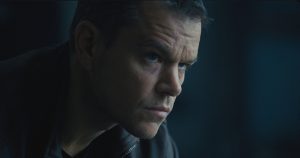Jason Bourne returns for a fourth film
The Jason Bourne film series has been running since the first film – The Bourne Identity – came out in 2002.

It’s been credited with reinvigorating the spy thriller genre, with the highest profile effect being the subsequent reinvigoration of James Bond reflected in the hiring of Daniel Craig in the 2006 reboot Casino Royale.
Although the series appeared to come to a conclusion in 2007 with The Bourne Ultimatum, there was a brief interlude for a fourth film without Bourne in the intervening years.
But times have changed significantly enough to inspire the new film.
It’s been nine years since the events of The Bourne Ultimatum in 2007 and in the intervening period Edward Snowden, Wikileaks, and social media has become huge.
Jason Bourne (Matt Damon) sees state sponsored surveillance and a clash of modern and old worlds boiling down to some fairly old fashioned conclusions.
Spectacle and continuity
The latest film appears to hark back to the Bourne Supremacy although the script for the new film remains competently written if, perhaps, lacking some of the sparkle that Tony Gilroy brought to the earlier releases.
Vincent Cassel makes another enjoyable villain, adding a personal element to his implacable assassin, while there’s several shades of grey in other supporting characters throughout the film.
There’s a spectacular anti-austerity Greek protest action sequence that kicks off the film in superb style after Bourne’s former ally Nicky Parsons (Julia Stiles) discovers something important from his past.
This gives us the Macguffin that brings the titular character out of almost a decade off grid after finding that he really doesn’t “remember everything” as he declared before.
The film moves at speed from place to place and from chase to chase with more screen time given to the machinations of the CIA as they chase down a much less talky (and broody) Bourne.
Shaky Cam
It’s easy to see how the latest instalment effortlessly fits into the the other films in the Bourne series.
The film ends with another massive set piece in Las Vegas which once again left me slightly dizzy at Paul Greengrass’ hand-held editing style.
Greengrass was responsible for helming The Bourne Supremacy and The Bourne Ultimatum, both good films, but I have to say once again that his trademark use of “shaky-cam” might have been realistic but induced a head ache for me towards the end of the film.
In earlier films I’d have called it motion sickness.
For that reason alone I can still declare The Bourne Identity as my favourite Bourne movie.